Blogs
“The Allure of Karbi’s Timeless Attire and Enchanting Jewellery”

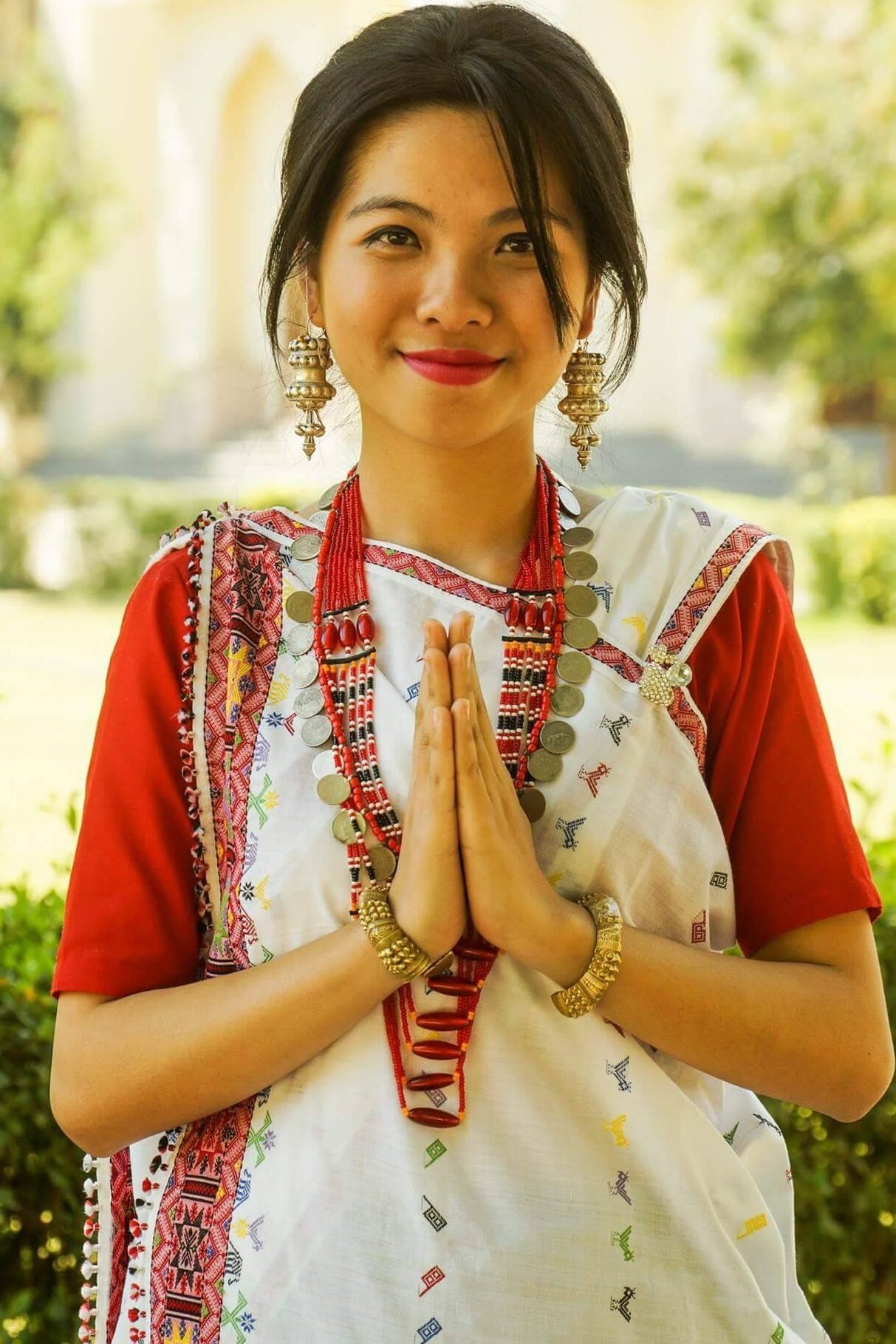
Who are Karbi’s ?
The Karbis,are the predominant tribal ethnic group in the Karbi Anglong district of Assam, have a rich and diverse tradition of clothing and jewelry. These cultural elements are lovingly crafted, primarily using locally grown cotton and Eri silk.
In Karbi Anglong, the demand for traditional attire remains high, cherished by both the young and old alike. Karbi women weavers are dedicated to preserving and modernizing these unique styles, ensuring the vibrant colors and ancient designs continue to flourish.
Karbi people are the main tribe of Karbi Anglong and West Karbi Anglong districts of Assam.This blog explores the traditional attire of the Karbi tribe for both men and women.
Intriguing Attire for Karbi Women:
Pini
- Pini is a type of skirt of black colour and worn around the waist tied with a belt.
- It can be of different designs like jangre, santok, honki ranchom, marbong homkri, ahi cherop, chamburukso apini, mekserek etc.
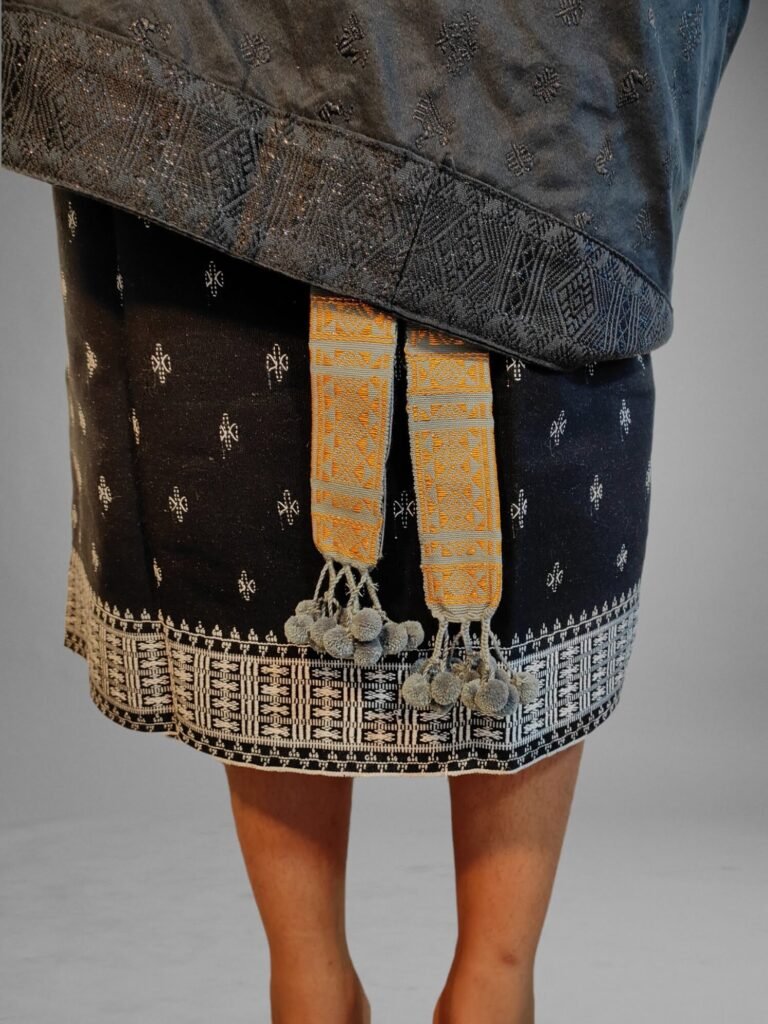
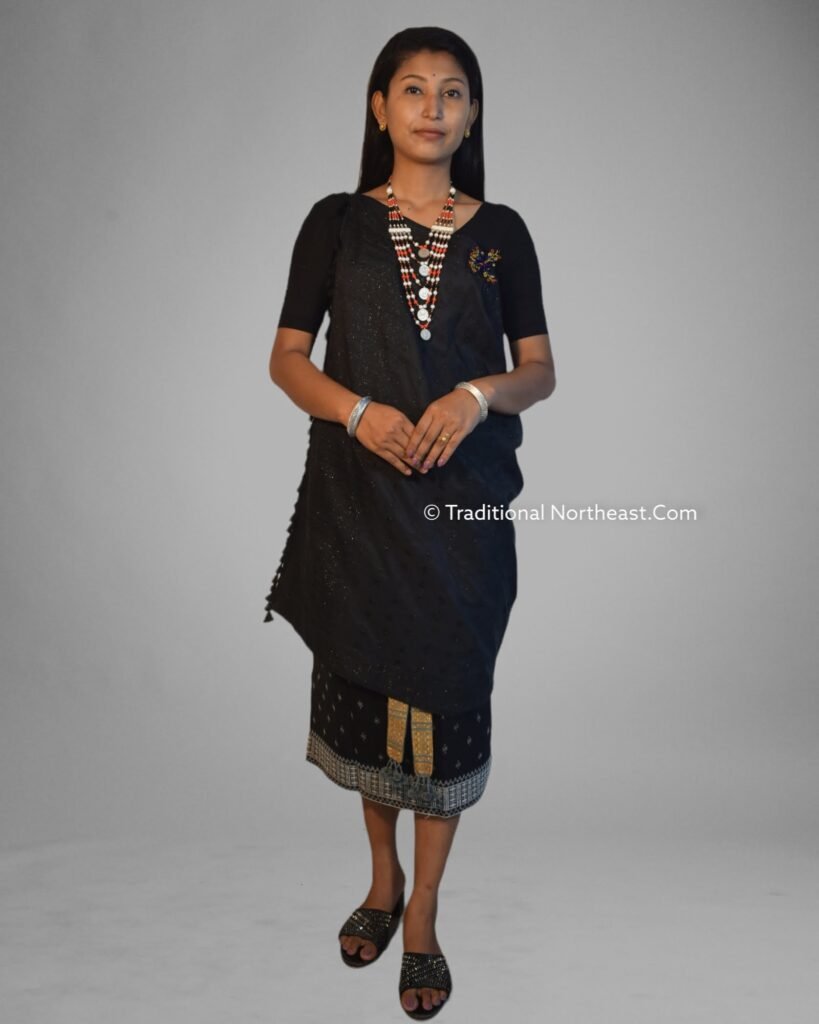
Pekok
- It is a square piece of cloth worn over the right shoulder, available in a variety of colors and designs.
- It can be of different colours and designs such as pe seleng, pe duphirso, pe khonjari, pe luru, pe jangphong and pe sarpi.
- Pe sarpi was generally for older women, pe sleng, pe jangphong for middle aged women and pe duphirso for young women.
- But this is not followed any longer
- Pekok is now produced largely by power looms outside Karbi Anglong, although the quality may not match that of traditional weavers


Jiso
- Jiso, a long black cloth with enchanting designs and fringes, once graced the bust.
- In modern times, this legacy of beauty has been transformed into short blouses for both comfort and contemporary allure
Vamkok
- Vamkok is the belt used to secure the Pini skirt, adorned with colorful fringes.
- Various designs such as amekpi, amekso, abermung, and more are crafted on traditional looms
Captivating Attire for Karbi Men:
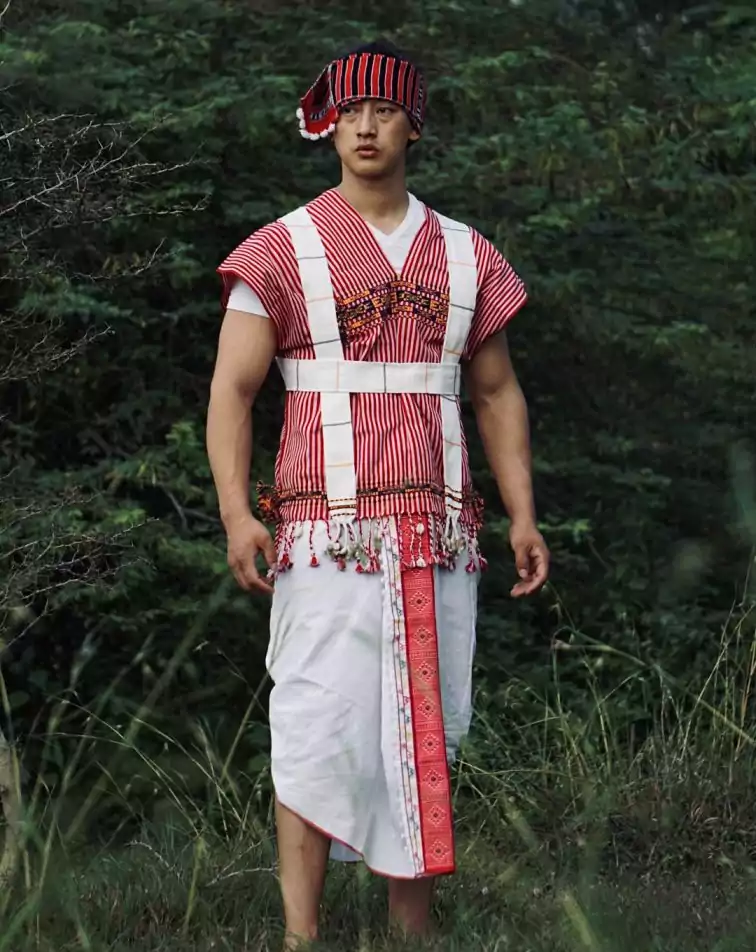
- Choi – The Dapper Jacket:
- Choi, a dapper jacket with a captivating array of types such as Choi hongthor and Choi miri, adds a dash of style to Karbi men’s fashion.
- Distinctions based on age, while traditional, have evolved to offer versatile fashion choices.
2. Poho – The Graceful Headwear:
- Poho, a graceful headwear or muffler, adds an aura of tradition to Karbi men’s attire.
- These headwear options, from simple long white poho to poho kelok, are meticulously designed and cherished.
3. Rikong – A Time-Honored Loin Cloth:
- Rikong, an age-old loin cloth, was once an essential part of men’s work attire, though rarely seen today.
- Choices range from rikong jongjong with vibrant designs to simple white rikong bamon.
4. Sator – The Dhoti Redefined:
- Sator, a graceful piece of white cloth, stands as a symbol of tradition, serving as a dhoti that covers the legs.
- The intricately designed long pe seleng complements the classic look, enhancing Karbi men’s style.
Karbi Folk Jewellery
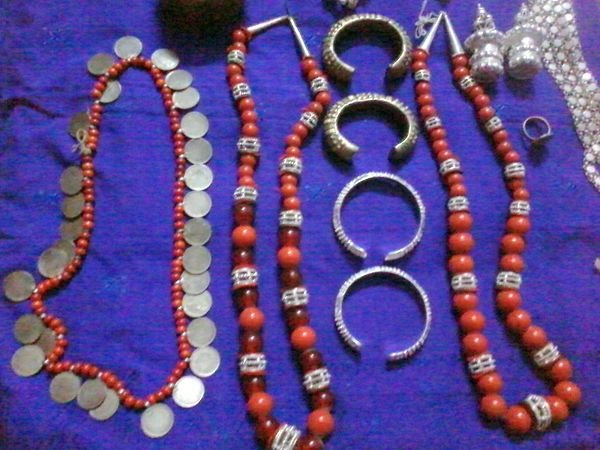
Traditional Karbi artisans have created unique jewellery pieces, including:
Lek: Neck ornaments crafted from materials like silver, gold, coins, and colorful beads, featuring various designs like lek sobai, ser alek pongting, and more.
Roi: Bangles made of brass, silver, or gold worn by both men and women, with distinct designs like Roi pengkhara and Pinso
Arnan: Rings made from brass, silver, and gold, often featuring coins and designs such as Rup Arnan and Arnan Sengkreng.
Nothengpi: Distinct ear adornments, with elderly Karbi women stretching their ear lobes to fit bamboo tubes. This style was fashionable in older times and included ornaments like Kadengchinro
Conclusion
The timeless traditions of Karbi attire and jewellery stand as treasured expressions of cultural identity. While they face the winds of change, the preservation of these art forms is paramount. These exquisite creations distinguish the Karbi tribe, preserving their unique cultural heritage for future generations.
